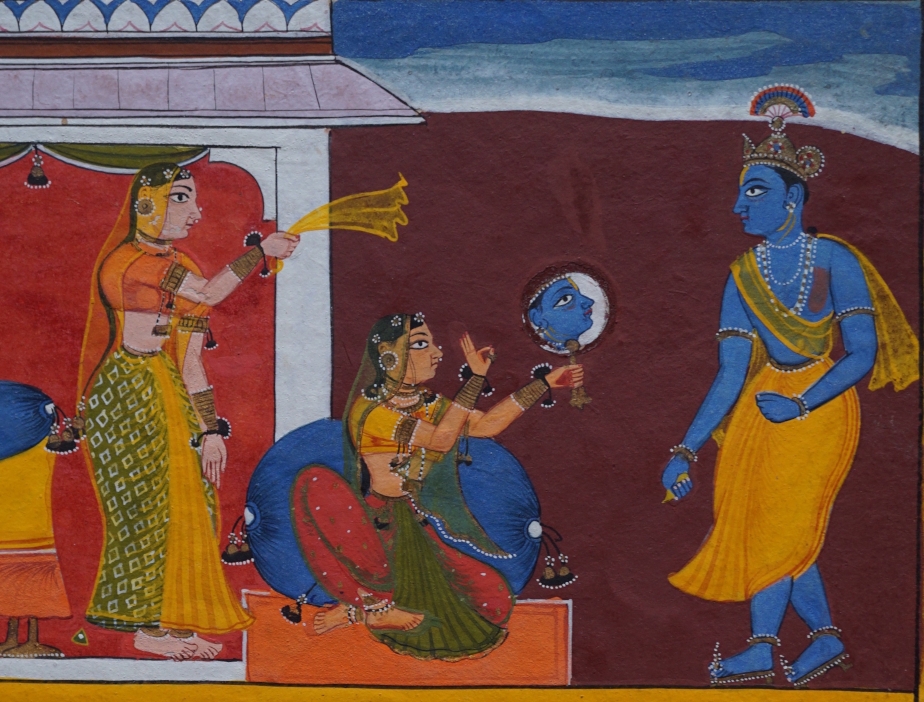“WE ARE THE MIRROR AS WELL AS THE FACE IN IT”; RUMI CLASSICAL INDIC BEAUTY IN THE VISUAL ARTS OF THE MUGHAL WORLD
-
|
19 Jan
21 Jan
2022
|
Southasian Painting
|
|
Molly Emma Aitken
|

These three sessions introduce the preeminent mood in South Asian arts during the Mughal era: erotic love. The theme of eros transcended religion, ethnicity and geographic ties, political affiliation and intellectual heritage to foster and even symbolize social cohesion. Eros was a thematic medium of seeming infinite depth and breadth into which singers, painters and poets could fold myriad layers of intricate meaning for people of spiritual and urbane knowing to discern. It became a way of thinking about all forms of difference and about the yearning for all forms of cohesion, including the yearning to unite with the Divine. Eros triggered the lowest and the highest in the human soul, and in works of art about love, people discovered one another’s sensibilities and acumen. Love, beautiful and thrilling, offered the most exalted mood for the expression of creative genius. In the Islamicate world, India was the land of love so that eros was also a poetics of longing for life in the Subcontinent. This is an art history masterclass, and all three sessions focus on Mughal responses in the visual arts to the love iconography of classical Indian literature and music. The first session introduces Mughal eros through a single remarkable masterpiece: the illustrated 1591 Hindi poetic treatise by Keshavdas, called the Rasikapriya, that the master painter Sahibdin prepared with his workshop at Udaipur for the Maharana of Mewar in the 1630s. The second session is about paintings that cast ancient Indian archetypes of female beauty, like the alasyakanya, as beloveds in Mughal albums or muraqqa’, which were bound codices of framed painting and calligraphy. The third is about the circa 1760s Bundi/Kota- style “Boston Ragamala,” so-called because many of the paintings reside at the Boston Museum of Fine Arts. With these three topics, we wade into the ocean of srngara, the aesthetic mood of eros, in Mughal times.
Day 1: Classical Indic Eros: Sahibdin’s Illustrated Rasikapriya of Keshavdas
Day 2: The Hindu “Idol: Mughal receptions of classical Indic aesthetics”
Day 3: For the Love of Music and Painting: the “Boston Ragamala”
Please read the Terms and Conditions carefully before registering.
Duration -
January 19, 20, 21, 2022
Timing: 6:15 - 8:30 PM IST
Fees
Rs. 3,000 (For student discounts registrations kindly email info@jp-india.org)
Registrations Closed

Molly Emma Aitken
Molly Emma Aitken is an Associate Professor in the Art History Department at The Graduate Center, CUNY and the Art Department at CUNY’s City College of New York. Her publications include When Gold Blossoms: Indian Jewelry from the Susan L. Beningson Collection (London: Asia Society and Philip Wilson Publishers, 2004), and The Intelligence of Tradition in Rajput Court Painting (New Haven: Yale University Press, 2010), which won CAA’s Charles Rufus Morey award in 2011 and the Ananda Kentish Coomaraswamy Book Prize in 2012. She has drafted most of a co-authored monograph on the classical Indian heroine or nayika in Mughal, Deccan and Rajput painting and poetry with a professor of early modern Hindi literature at Columbia University, Allison Busch (1969-2019). Aitken is currently working on two manuscripts. One, tentatively titled, We Are All Women is about gender, eros and play in Mughal painting; the second, with the working title In the Sisterhood of Images, is a memoir in art history. Aitken has been travelling to India for research since 1992 when she apprenticed for a year to renowned Mughal and Rajput painting master Bannu ji. She misses being a painter; the experience of making still colours all of her scholarships.